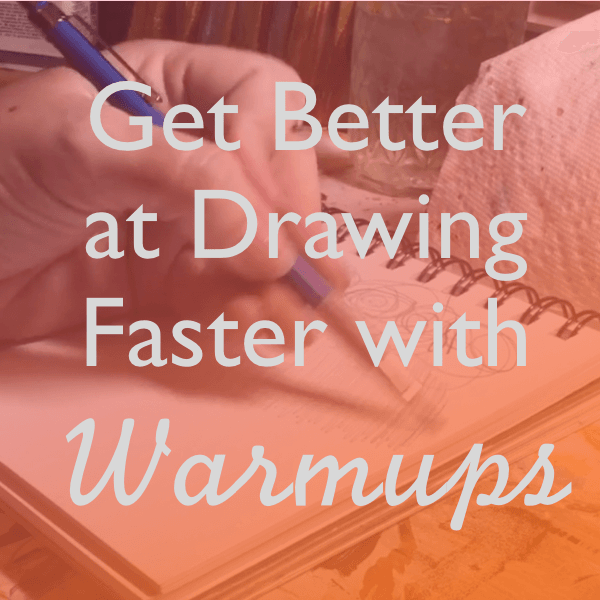
Are you frustrated by your skill level? Feel like you’ve hit a wall? Do you feel dissatisfied with what you draw?
Do you want to learn how to do better gradients or other techniques? Warming up with pencil drills can help you!
Warm ups with pencils can help you:
- Become more skilled at drawing (people things whatever)
- Learn your tools inside and out
- Build muscle and hand/eye coordination
- Relax
- Focus your mind
Check out this video on pencil warm ups (5 min 36 seconds)
Practice doesn’t have to take a long time or be boring. Just a couple of minutes before you start drawing “for real” can help you mentally and physically prepare and grow your abilities.
I like to start with circular marks to warm up my hand and fingers and reconnect my hand/eye coordination.
Make the connection with how hard and light you can press while drawing or scribbling circles.
Start simple and get more complex as you warm up.
See how hard or light you can press on the paper to make marks. Try making your lines thick and thin. Experiment with mark making.
Draw different shapes – diamond, squares, etc.
Practice specific techniques in a warm up session to deliberately practice how to do something. Examples include:
- Perspective Drawing
- Shading and tone
- Using tortillions
- Drawing textures like types of fabric or surfaces
- Contour drawing
- Trying out new drawing tools or surfaces
Different pencil tips give different edges
Try different points and edges. Sharp, blunt, broken. They will all give different marks. Try “leadless” pencils and wooden pencils. Try different charcoal and conte sticks.
Experiment with techniques
- Shading tip: you can go back over what you first put down to create denser and more gradual tonal transitions.
- Try vary how hard you press and how close lines are when you lay them down.
- Lighten up as you go
- Don’t worry about perfect at first
- Use scrap paper to make tortillion to rub and smooth the lines
- Be careful about rubbing work with your fingers – there are oils and chemicals on them that can damage the work
- Use a stub of paper to rub the paper and lay down a sheet of paper to shield it from your hand
Cross hatching
- Vary the weight of strokes
- Try drawing “bigger” / looser – tape your pencil to a rod or larger brush, maybe even a broom! Have you ever tried drawing standing up with the paper on the floor?
- Lay down opposite lines on top of each other
- Try to make neat evenly spaced lines
- Now try messy, uneven lines for a different effect.
- Go over the lines with squiggles and shapes
Take care of yourself. Shake your hand out if it starts to feel sore or stiff.
When you figure out what you are having trouble with, focus on that. Try again at the end of your drawing session and see how you do. Journalling how the session went, even if it is only a sentence or two is a great way to capture progress over time.
Over time you will see an improvement in your drawing!
I hope you found these tips helpful. Do you warm up before you draw?
